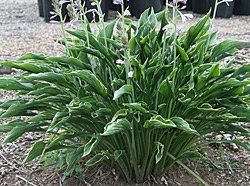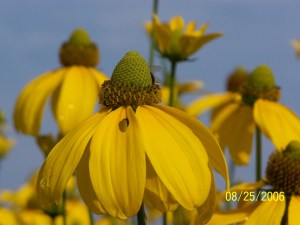
iPad mini (Photo credit: patrick-allen)
This was written by Jane Milliman and I felt it was worth sharing! By all means if you find an app that you have found to be helpful, I’d be glad to hear about it! We’re always looking for ways to make our customer’s gardening experience a positive one!
Fortunately, a few apps for both Android and Apple users have generated positive reviews and the even better news is that two of the better ones are free.
The Gardening Guide from Mother Earth News (free onApple and on Android, as Garden Guide), Gardening How-To (free on iPad and Android) and Landscaper’s Companion — Gardening Reference Guide ($6 on iPad andiPhone, $5 on Android) are all worth downloading.
The Landscaper’s Companion wasn’t created by a gardener, but the app’s developer, Dave Stevenson, and his researchers have landscaping and gardening experience with botanical gardens and the United States Department of Agriculture, among others.
The companion is an encyclopedia of sorts, with more than 20,000 plants and vegetables listed. You can browse an alphabetized index that is separated into 16 categories, including houseplants and vegetables, for instance, or you can search by name.
The search feature is nicely designed. You can enter “cucurbita pepo” or “zucchini” or “summer squash” and the software will find the same vegetable.
Each plant page includes a profile with the plant’s zone, growth rate, water and sun requirements, color and typical height and width. The descriptions are basic but include important elements — like whether the plant has thorns, for instance — that would help a gardener prepare for a planting.
You can also narrow the search criteria if you specify the zone, height or color of a plant, among other features. If you live in an area with deer, you can also filter results to show only plants that are deer-resistant.
On each plant page you can leave notes for yourself, e-mail the description or add photos of your own. In another section of the app, you can review only those plants that you marked as favorites, or review every note you have recorded.
Not every feature of the app is built with this same attention to detail.
You could spend hours perusing the 14,000 photos in the “Plant Images” section, for instance. Unfortunately, some of that time would be wasted, since you can sort the images to include only plants in your particular zone, but you can’t sort in other meaningful ways.
If you could filter out all but the plants that needed full sun, for instance, or those with red flowers, the images would be more useful.
While the Landscaper’s Companion is encyclopedic, it’s not highly useful as a how-to guide. On that front, the Mother Earth News Gardening Guide is considerably more helpful, at least for vegetable gardeners.
The app makes good use of archival materials from Mother Earth News, an environmental conservation magazine that publishes organic gardening tips, among other pieces.
The guide includes tutorials on growing about 20 different types of crops, like carrots and tomatoes, and the advice is excellent.
The carrot tutorial, for instance, offers overviews on the different varieties, how to plant them, when to harvest and how to generate and collect seeds. The “Growing Tips” section includes a range of information that will appeal to serious and more casual vegetable gardeners alike. (Carrots grow best in soil with a pH balance of 5.8 to 7.0, it says, then adds: “Before pulling carrots, use a digging fork to loosen the soil just outside the row.”)
The techniques section is equally helpful, with 23 in-depth tips on disease prevention and planting self-seeding crops, among others.
The app is free, which is great, but it wastes valuable space with advertisements for Mother Earth News. No ad-free option exists for current subscribers or those who would rather pay for the app.
Flower gardeners who own iPads have a solid option with Gardening How-To, which is built on content from the magazine of the same name, published by the National Home Gardening Club.
Users receive four free issues of the magazine in iPad format, which yields dozens of features and smaller stories on flower gardening and information for vegetable and fruit growers.
Unlike many other apps, Gardening How-To isn’t strictly confined to biology or design. Articles on new plant varieties and building flower beds sit alongside more conventional growing tips.
You can take the iPad into the yard for guidance, as long as the device is in a zippered plastic food storage bag. That way the screen is protected yet still reacts to your touch.
Graphically, Gardening How-To is far more polished than Mother Earth, with beautiful photography and interactive elements like animated graphics, audio and video. (All those interactive elements and glossy photos add up to a slow download, so start the download at bedtime.)
Unfortunately, I found nothing as good as this for iPhone or Android users, who must pick through a thicket of poorly rated choices — often for $1 or $2 — to get what they need.
Given that we are still in the early days of apps, this looks like a case of the software engineers grabbing some quick bucks before being crowded out by more established gardening publishers.
So until those publishers get serious about mobile technology, gardeners will have to pull lots of weeds to find something good.


 The Perennial Plant Association has chosen for the 2011 perennial of the year the
The Perennial Plant Association has chosen for the 2011 perennial of the year the 
 Common Name: Arkansas bluestar,
Common Name: Arkansas bluestar, 




















